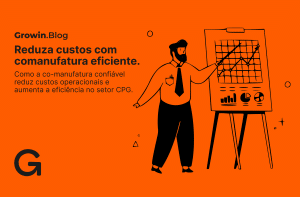In the ever-evolving landscape of the Consumer Packaged Goods (CPG) industry, staying ahead of the curve is not just advantageous; it’s imperative. As we step into 2024, the industry stands at a pivotal juncture, influenced by rapid technological advancements, shifting consumer behaviors, and emerging regulatory frameworks. These driving forces are not merely shaping current practices but are actively redefining the future of the sector. This essay delves into the 16 key trends forecasted to dominate the CPG industry in 2024. From the rise of better-for-you products to the integration of artificial intelligence and the increasing focus on sustainability, these trends offer a comprehensive view of the transformational shifts that are set to redefine how companies operate, engage with consumers, and innovate in this dynamic marketplace. As we explore these trends, we not only understand the current state of the CPG industry but also gain insights into its future trajectory, equipping ourselves to navigate and thrive in this changing landscape.
1. Better-for-You (BFY) Products
The CPG industry is witnessing a significant shift towards products that promote health and wellness. Consumers are increasingly seeking items that offer benefits such as improved gut health, relaxation, and energy. This trend reflects a broader movement towards holistic well-being, driving CPG companies to innovate in product formulation and marketing to cater to this demand.
2. Disruptive Market Entrants
The rise of direct-to-consumer brands and startups is reshaping the traditional CPG landscape. These new players are challenging established giants with innovative business models, niche products, and agile marketing strategies. Their success is a testament to the evolving consumer preferences and the importance of adaptability in the industry.
3. Functional Foods and Beverages
There’s a growing consumer interest in foods and beverages that provide functional benefits. This trend is supported by technological advancements in health monitoring, leading to the development of products that cater to specific nutritional needs. Healthy snacks, functional beverages, and foods enriched with superfoods are becoming staples in consumer diets.
4. Personalized Nutrition and AI
Advancements in AI are enabling a more personalized approach to nutrition. By leveraging consumer data, companies are able to offer dietary recommendations that are tailored to individual health needs. This trend is revolutionizing the way consumers think about food and nutrition, encouraging a more data-driven approach to dietary choices.
5. Sustainability
Sustainability is becoming a central focus in the CPG industry. Companies are adopting eco-friendly practices in production and packaging, driven by consumer demand for products with lower environmental impact. This trend is not just a corporate responsibility initiative but also a key factor influencing consumer purchasing decisions.
6. Digital Transformation
The CPG industry is undergoing a digital transformation, leveraging technology to enhance customer engagement, streamline supply chains, and enable personalized product development. This trend is vital for staying competitive in a rapidly evolving market and meeting the increasing consumer expectations for digital experiences.
7. Data Transparency
Data transparency is becoming crucial in the CPG industry. Companies are investing in technologies and strategies to provide more visibility into their product development and market positioning. This transparency is key to building consumer trust and making informed decisions in a data-driven marketplace.
8. E-commerce Impact
E-commerce platforms are significantly impacting the CPG industry, influencing product assortment and distribution strategies. The convenience and efficiency of online shopping are prompting CPG companies to rethink their retail and marketing strategies to cater to the online consumer base effectively.
9. Artificial Intelligence (AI)
AI is playing a pivotal role in the CPG industry, from analyzing market trends to personalizing consumer experiences. AI technologies enable companies to gain deeper insights into consumer behavior and preferences, leading to more effective product development and marketing strategies.
10. Hyper-Personalization
Hyper-personalization is a growing trend in the CPG industry, driven by consumer demand for products and experiences that are tailored to their individual preferences and needs. This trend is changing the way companies approach product development, marketing, and customer engagement.
11. Direct-to-Consumer (D2C) Sales
The rise of the D2C model is allowing CPG brands to interact directly with consumers, bypassing traditional retail channels. This trend is enabling brands to gain better insights into consumer preferences and build stronger relationships with their customers.
12. MoCRA Compliance
The introduction of the Modernization of Cosmetics Regulation Act (MoCRA) is bringing new compliance challenges to the CPG industry, particularly in the cosmetics and personal care segments. Companies are adapting to these new regulations to ensure product safety and maintain consumer trust.
As we look towards the horizon of 2024, the Consumer Packaged Goods industry stands at a crossroads shaped by innovation, consumer consciousness, and technological integration. The 12 key trends outlined in this essay — from the rise of better-for-you products to the advent of AI-driven personalization and the imperative of sustainability — represent more than fleeting shifts in consumer preferences or market dynamics. They signify a fundamental transformation in how CPG companies operate, engage with their audience, and conceptualize their products.
The growing inclination towards health and wellness, the disruptive influence of new market entrants, and the embracing of digital transformation all point to an industry that is rapidly adapting to meet the evolving needs of a diverse and demanding consumer base. The push for sustainability and compliance with new regulations like MoCRA highlights a deepening responsibility towards the planet and society.
In navigating these trends, CPG companies must be agile, innovative, and customer-focused. The successful brands of 2024 will be those that not only anticipate these changes but also actively participate in shaping the industry’s future. The journey ahead for the CPG industry is both challenging and exciting, filled with opportunities to redefine market standards and create lasting value for consumers and communities alike.




